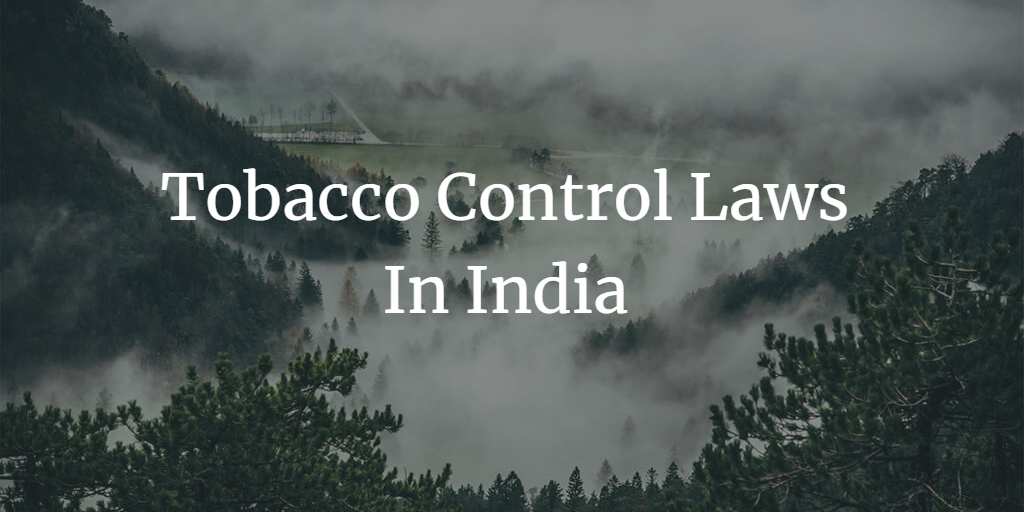Tobacco Control Laws In India: Its Ambit, Failures And Successes

Table of Contents
Introduction
Ambit of Tobacco Control Laws
Cigarettes and Other Tobacco Products Act, 2003
Indian Penal Code
Other Legal Provisions
Challenges and Failures
Successes
Conclusion
Introduction
Tobacco consumption poses significant public health challenges in India, with millions of people suffering from tobacco-related diseases and a considerable economic burden on the healthcare system. To tackle this issue, India has implemented several tobacco control laws aimed at reducing tobacco consumption and promoting public health. This article examines the scope of these laws, the difficulties faced in enforcing them, and the successes achieved in curbing tobacco use.
Ambit of Tobacco Control Laws
India's tobacco control laws encompass various legal provisions aimed at regulating the production, sale, and consumption of tobacco products:
Cigarettes and Other Tobacco Products Act of 2003
COTPA is the primary legislation governing tobacco control in India. The Act contains several provisions aimed at reducing tobacco consumption, including:
Prohibition of smoking in public places: COTPA bans smoking in public places, with a few exceptions for designated smoking areas in specific establishments.
Restrictions on tobacco advertising: The Act prohibits the direct and indirect advertisement of tobacco products, with some exceptions for point-of-sale advertising.
Mandatory pictorial warnings: Tobacco product packaging must display pictorial health warnings covering at least 85% of the principal display area.
Regulation of tobacco sales: COTPA prohibits the sale of tobacco products to minors and within 100 yards of educational institutions.
Indian Penal Code
The Indian Penal Code (IPC) contains provisions that can be applied to address some aspects of tobacco control, such as public nuisance (Section 268) and endangering the life or personal safety of others (Section 336).
Other Legal Provisions
Several other legal provisions and regulations contribute to tobacco control efforts in India, including the Food Safety and Standards (Prohibition and Restrictions on Sales) Regulations, 2011, which bans the use of tobacco and nicotine as ingredients in food products, and the Juvenile Justice (Care and Protection of Children) Act, 2015, which prohibits the sale of tobacco products to minors.
Challenges and Failures
Despite the legal framework in place, India faces several challenges in enforcing tobacco control laws:
Lack of awareness: Many people remain unaware of the laws and the health risks associated with tobacco use.
Weak enforcement: Inadequate enforcement of the existing laws contributes to widespread non-compliance, particularly in rural areas.
Illicit trade: The illicit trade of tobacco products, including smuggled and counterfeit goods, undermines the effectiveness of tobacco control measures and results in a loss of tax revenue.
Influence of the tobacco industry: The tobacco industry often opposes tobacco control measures, lobbying against stricter regulations and attempting to undermine their implementation.
Socio-cultural factors: In some regions, tobacco use is deeply ingrained in the local culture, making it challenging to change attitudes and behaviors.
Successes
Despite these challenges, India has achieved some notable successes in tobacco control:
Reduction in tobacco consumption: According to the Global Adult Tobacco Survey, tobacco use among adults in India declined from 34.6% in 2009-10 to 28.6% in 2016-17.
Effective public health campaigns: India has implemented several successful public health campaigns to raise awareness about the dangers of tobacco use and promote tobacco cessation.
International collaboration: India is a party to the World Health Organization's Framework Convention on Tobacco Control, which facilitates international cooperation and support for tobacco control efforts.
Conclusion
While significant progress has been made in recent years, the battle against tobacco consumption in India is far from over. Strengthening the enforcement of existing laws, raising public awareness, and addressing the challenges posed by the tobacco industry and socio-cultural factors are crucial to achieving further success in tobacco control. Ultimately, reducing tobacco consumption in India will require a sustained and coordinated effort from policymakers, law enforcement agencies, public health organizations, and civil society.


